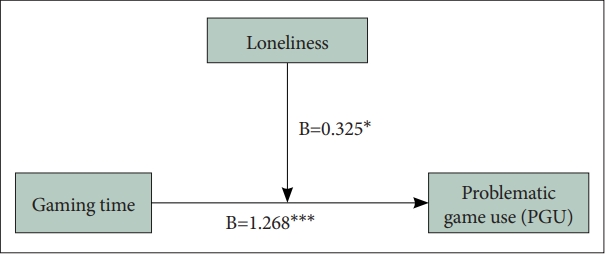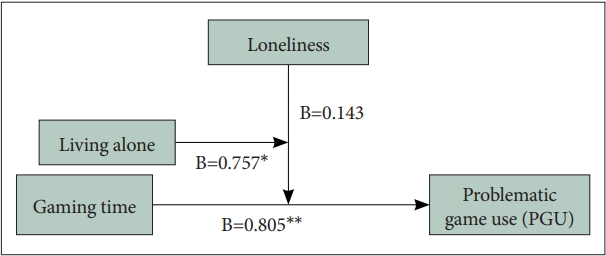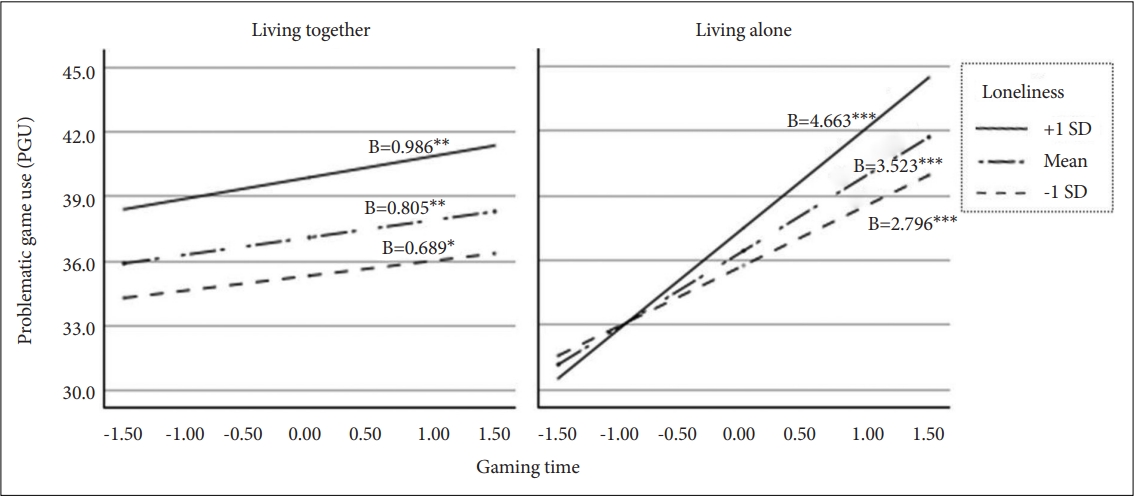1. Prato GD, Feijoo Gonzalez CA, Simon JP. Innovations in the video game industry: changing global markets. Commun Strateg 2014;94:17-38.
6. Griffiths MD, Király O, Pontes HM, Demetrovics Z. An overview of problematic gaming (1st ed). In: Aboujaoude E, Starcevic V, editor. Mental health in the digital age: grave dangers, great promise. New York: Oxford University Press, 2015, p. 27-45.
7. Boldi A, Rapp A, Tirassa M. Playing during a crisis: the impact of commercial video games on the reconfiguration of people’s life during the COVID-19 pandemic. Hum Comput Interact 2022 Mar 30 [Epub].
https://doi.org/10.1080/07370024.2022.2050725.



8. Vuorre M, Zendle D, Petrovskaya E, Ballou N, Przybylski AK. A large-scale study of changes to the quantity, quality, and distribution of video game play during a global health pandemic. Technol Mind Behav 2021;2:1-8.

10. Kuss DJ, Griffiths MD. Internet gaming addiction: a systematic review of empirical research. Int J Ment Health Addict 2012;10:278-296.


11. Ok C. Extraversion, loneliness, and problematic game use: a longitudinal study. Pers Individ Differ 2021;168:110290

15. Kim HS, Son G, Roh EB, Ahn WY, Kim J, Shin SH, et al. Prevalence of gaming disorder: a meta-analysis. Addict Behav 2022;126:107183


16. Cudo A, Dobosz M, Griffiths MD, Kuss DJ. The relationship between early maladaptive schemas, depression, anxiety and problematic video gaming among female and male gamers. Int J Ment Health Addict 2022 Jun 27 [Epub].
https://doi.org/10.1007/s11469-022-00858-2.

18. Biolcati R, Passini S, Griffiths MD. All-in and bad beat: professional poker players and pathological gambling. Int J Ment Health Addict 2015;13:19-32.


21. Király O, Tóth D, Urbán R, Demetrovics Z, Maraz A. Intense video gaming is not essentially problematic. Psychol Addict Behav 2017;31:807-817.


22. Lemmens JS, Valkenburg PM, Gentile DA. The internet gaming disorder scale. Psychol Assess 2015;27:567-582.


24. Choi J, Cho H, Lee S, Kim J, Park EC. Effect of the online game shutdown policy on internet use, internet addiction, and sleeping hours in Korean adolescents. J Adolesc Health 2018;62:548-555.


25. Zhan JD, Chan HC. Government regulation of online game addiction. Commun Assoc Inf Syst 2012;30:187-198.

26. Hwang SJ, Hong JP, An JH, Kim MH, Jeong SH, Chang H. Development and validation of loneliness and social isolation scale. J Korean Neuropsychiatr Assoc 2021;60:291-297.


27. Chen C, Leung L. Are you addicted to Candy Crush Saga? An exploratory study linking psychological factors to mobile social game addiction. Telemat Inform 2016;33:1155-1166.

30. Stockdale L, Coyne SM. Video game addiction in emerging adulthood: cross-sectional evidence of pathology in video game addicts as compared to matched healthy controls. J Affect Disord 2018;225:265-272.


31. Lieberz J, Shamay-Tsoory SG, Saporta N, Esser T, Kuskova E, Stoffel-Wagner B, et al. Loneliness and the social brain: how perceived social isolation impairs human interactions. Adv Sci (Weinh) 2021;8:e2102076


34. Vermeulen L, Van Looy J, De Grove F, Courtois C. >You are what you play?: a quantitative study into game design preferences across gender and their interaction with gaming habits. Proceedings of DiGRA 2011 conference: think design play; 2011 Sep 14-17; Hilversum, Netherlands. Tampere: DiGRA; 2011.
35. Terlecki M, Brown J, Harner-Steciw L, Irvin-Hannum J, Marchetto-Ryan N, Ruhl L, et al. Sex differences and similarities in video game experience, preferences, and self-efficacy: implications for the gaming industry. Curr Psychol 2011;30:22-33.


36. Gierveld Jde J, van Groenou MB, Hoogendoorn AW, Smit JH. Quality of marriages in later life and emotional and social loneliness. J Gerontol B Psychol Sci Soc Sci 2009;64:497-506.

37. Victor CR, Yang K. The prevalence of loneliness among adults: a case study of the United Kingdom. J Psychol 2012;146:85-104.


41. Loton D, Borkoles E, Lubman D, Polman R. Video game addiction, engagement and symptoms of stress, depression and anxiety: the mediating role of coping. Int J Ment Health Addiction 2016;14:565-578.


42. Sunwoo L. Loneliness among older adults in the Czech Republic: a socio-demographic, health, and psychosocial profile. Arch Gerontol Geriatr 2020;90:104068


43. Bland AR, Roiser JP, Mehta MA, Sahakian BJ, Robbins TW, Elliott R. The impact of COVID-19 social isolation on aspects of emotional and social cognition. Cogn Emot 2022;36:49-58.


44. Oh J, Neal ZP. Two’s company, but four’s a crowd: the relationship among COVID-19 stress, household size, and life satisfaction. Collabra Psychol 2021;7:24923


46. Baek IC, Kim JH, Joung YS, Lee HW, Park S, Park EJ, et al. Development and validation study of game overuse screening questionnaire. Psychiatry Res 2020;290:113165


48. Hayes AF. Introduction to mediation, moderation, and conditional process analysis: a regression-based approach (2nd ed). New York: Guilford Publications; 2018.
49. Oka T, Hamamura T, Miyake Y, Kobayashi N, Honjo M, Kawato M, et al. Prevalence and risk factors of internet gaming disorder and problematic internet use before and during the COVID-19 pandemic: a large online survey of Japanese adults. J Psychiatr Res 2021;142:218-225.


51. Park K, Chang H, Kim K, Cho YI. The variety of gaming devices and game over-dependence among middle school students: a moderated mediation model of time spent and gender. Kor J Psychol Health 2022;27:251-270.












